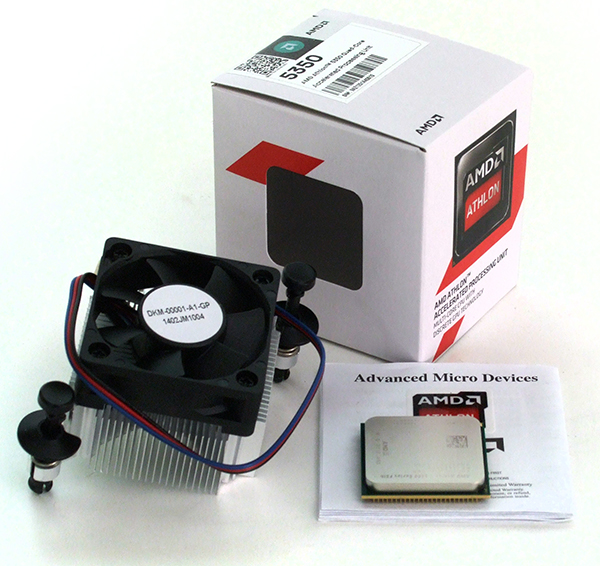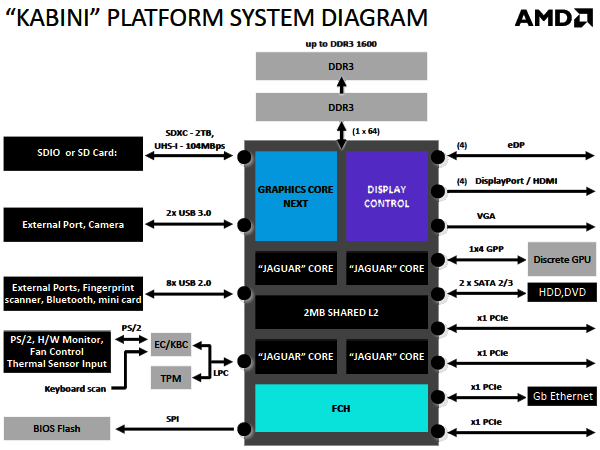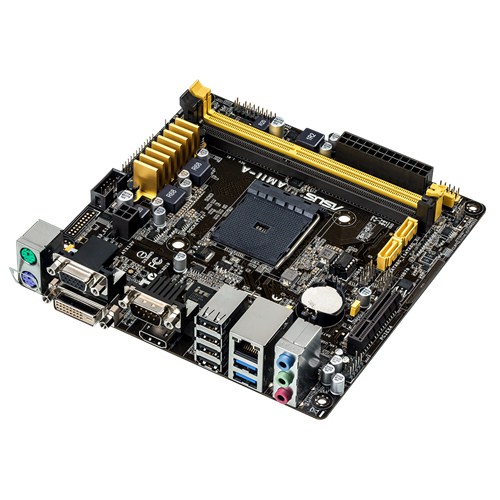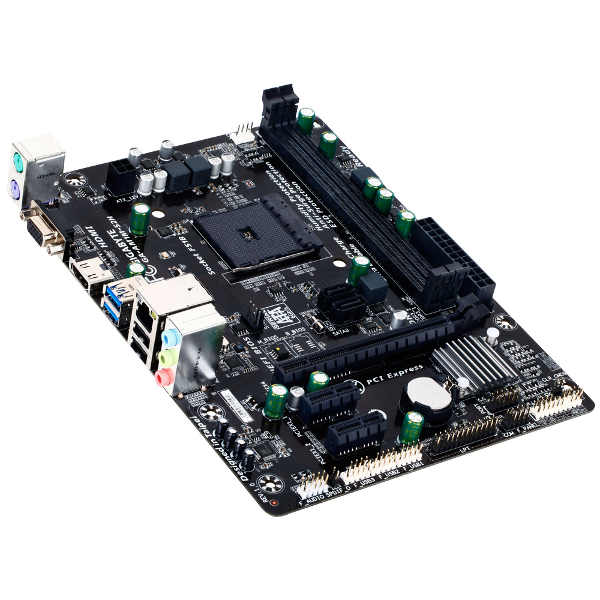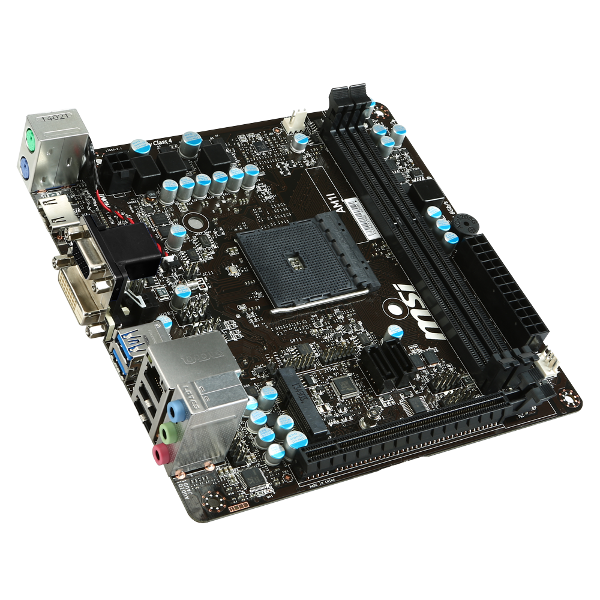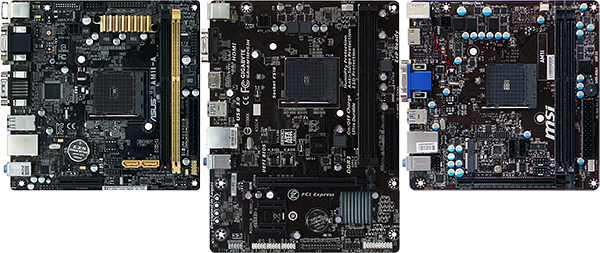Three AMD AM1 Motherboards For The Kabini APU, Reviewed
Targeting power-misers, AMD’s low-energy Kabini-based APUs could easily find their way into entertainment PCs, office machines, and PoS terminals. Of course, you need a motherboard to make it a “platform” and we found three companies willing to help.
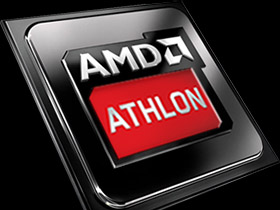
Kabini Appeals To Low-Cost, Low-Power
Does anyone remember VIA’s C3 processor, introduced more than a decade ago? Designed mostly for x86-based Internet appliances and kiosks, the mini-ITX platform it popularized was admired by builders who just wanted something smaller. After several generations of improvement, VIA's boards achieved some degree of mediocrity. In reality, though, compact dimensions, modest heat, and conservative power consumption were the only reasons anyone voluntarily chose those slow, expensive configurations. Sounds pretty industrial, right? There were even inventive technologists who used the C3 to experiment with automotive entertainment.
Eventually, the mini-ITX form factor went in an entirely different direction as enthusiasts attempted to copy Shuttle’s portable gaming cubes. Meanwhile, low-power platforms like Intel's Atom continued to take over the roles formerly targeted by the original C3-based mini-ITX platform.
And then there's AMD. In case you missed our look at the company's most recent introduction on the processor side, check out AMD Athlon 5350 And AM1 Platform Review: Kabini In A Socket. And if you're not familiar with Kabini, the APU architecture that drops into AM1, give AMD's Kabini: Jaguar And GCN Come Together In A 15 W APU a read.
While everyone else was running around soldering CPUs onto motherboards, AMD took notice of the enthusiast backlash and retained its upgradeable ZIF socket. On paper, that means you may have an upgrade path, providing the next generation of entry-level APUs is still AM1-compatible.
Motherboard makers have to appreciate the socketed configuration because it frees them up to design a wider range of products without outfitting each with different soldered-down processors.
Supporting a single PCIe 2.0 x4 slot and four additional x1 devices, that kind of flexibility could be important to some buyers. Even more important to AMD and its partners on the motherboard side is that those interfaces are built into the Kabini APU, without the need for the extra FCH (Fusion Controller Hub, or AMD's name for the southbridge component) found on its higher-end Kaveri platform. AMD’s Kabini–based Socket FS1b processors really are the SoC (System on a Chip) design that companies like Cyrix could have only dreamed about.
| AM1 Motherboard Features | |||
|---|---|---|---|
| Row 0 - Cell 0 | Asus AM1I-A | Gigabyte AM1M-S2H | MSI AM1I |
| PCB Revision | 1.01 | 1.0 | 2.1 |
| Chipset | K16 IMC | K16 IMC | K16 IMC |
| Voltage Regulator | Two Phases | Two Phases | Three Phases |
| BIOS | 0505 (04/15/2014) | F1 (01/27/2014) | V10.0 (02/21/2014) |
| 100.0 MHz BCLK | 99.98 (-0.02%) | 99.80 (-0.20%) | 99.80 (-0.20%) |
| I/O Panel Connectors | |||
| P/S2 | 2 | 2 | 2 |
| USB 3.0 | 2 | 2 | 2 |
| USB 2.0 | 4 | 2 | 2 |
| Network | 1 | 1 | 1 |
| CLR_CMOS Button | None | None | None |
| Digital Audio Out | HDMI-only | HDMI-only | HDMI-only |
| Digital Audio In | None | None | None |
| Analog Audio | 3 | 3 | 3 |
| Video Out | VGA, DVI-D, HDMI | VGA, HDMI | HDMI, VGA, DVI-D |
| Other Devices | 9-Pin Serial Com Port | None | None |
| Internal Interfaces | |||
| PCIe 3.0 x16 | None | None | None |
| PCIe 2.0 x16 | 1 x Open-Ended PCIe x4 | 1 (4-Lanes) | 1 (4-Lanes) |
| PCIe 2.0 x1 | None | 2 | 1 x Mini-PCIe |
| USB 3.0 | None | None | None |
| USB 2.0 | 2 (4-ports) | 3 (6-ports) | 2 (4-ports) |
| SATA 6.0 Gb/s | 2 | 2 | 2 |
| 4-Pin Fan | 2 | 2 | 1 |
| 3-Pin Fan | None | None | 1 |
| FP-Audio | 1 | 1 | 1 |
| S/PDIF I/O | None | Output Only | None |
| Internal Buttons | None | None | None |
| Internal Switch | None | None | None |
| Diagnostics Panel | None | None | None |
| Other Devices | Serial Com, LPT Printer | Serial Com, LPT Printer | Serial Com |
| Mass Storage Controllers | |||
| Chipset SATA | 2 x SATA 6Gb/s | 2 x SATA 6Gb/s | 2 x SATA 6Gb/s |
| Chipset RAID Modes | None | None | None |
| Add-In SATA | None | None | None |
| USB 3.0 | Integrated-only | Integrated-only | Integrated-only |
| Networking | |||
| Primary LAN | RTL8111GR PCIe | RTL8111F PCIe | RTL8111G PCIe |
| Secondary LAN | None | None | None |
| WiFi | None | None | None |
| Bluetooth | None | None | None |
| Audio | |||
| HD Audio Codec | ALC887 | ALC887 | ALC887 |
| DDL/DTS Connect | None | None | None |
| Warranty | Three Years | Three Years | Three Years |
Reminiscing about mini-ITX's history becomes even more relevant as we look at the legacy features enabled by all three boards. Asus even includes a nine-pin serial port on the AM1I-A's I/O panel, making it a more-suitable replacement for legacy manufacturing PLCs. And those printer port break-out headers certainly come in handy when your 20-year-old PoS software still uses a parallel port dongle for authentication.
Get Tom's Hardware's best news and in-depth reviews, straight to your inbox.
Current page: Kabini Appeals To Low-Cost, Low-Power
Next Page Asus AM1I-A Features-
damric TL;DRReply
Why not throw a mid-ranged discreet GPU in there and see what happens? It's all we really want to know. Otherwise this platform is for strictly 2D flash games. -
jdwii This build should not be used for anything other then flash games for HTPC its perfect and light server work i can build this for 250$ and its perfect.Reply -
blackmagnum It uses the 'Jaguar' core; the same core technology as the mighty Playstation 4. So, I believe it can handle more than simple flash games!Reply -
zetonfire I own this processor paired with a gt 630 from nvidia, 4 gb of ram, hdd 1tb 7200 Rpm and what can i say, it does the job well, it runs 1080p movies with no problem. I play lol with high settings at @ 30-60 fps. At WoW it kinda struggles on 25 man raids but it still playable 20+fps, to mention that settings are nealy high. (both on 1080p). Nfs mostwanted 2012, battlefield 3, grid 2 on 720p 30fps most of the time, some fps drop there and there but still ok.I think if you put a better videocard ( i had the 630 @ house standing for nothing) it could do much better in certain games that are not processor hungry.Reply -
Lightbulbie @blackmagnumReply
Just because the technology is the same, it doesn't mean that it well perform on par with the PS4. -
wtfxxxgp I don't understand why THW doesn't add in games like League of Legends or DOTA2 when testing this type of hardware. I'd like to believe that the person that buys a system like this and DOES NOT buy a discreet GPU is NOT going to be playing games like Far Cry anything. LOL and DOTA2 are free to play, and therefore it is much more likely that they may, at one or other point in time, be tested on this type of system. Make the Games review relevant to the hardware if there is not a discreet GPU, pretty please?Reply -
Eelco van Vliet In Europe the prices are a bit differentReply
Asus 33 Euro
Gigabyte 32 Euro
MSI 30 Euro
I am gonna get the Asus at that price... -
MU_Engineer I recently built a wireless router using an Athlon 5150 in a Biostar AM1ML. I'm surprised that $30 board wasn't in the comparison as it has two pretty significant advantages that none of these boards have. It's a micro-DTX board which gives it an extra PCIe slot compared to the mini-ITX units but it still fits in most of the "mini-ITX" cube cases unlike the Gigabyte unit tested here. That second PCIe slot was just what the doctor ordered as I needed to add both a wired Ethernet card and a wireless NIC for that build and it all fit perfectly in a little Silverstone Sugo.Reply -
Puiucs again i see reviews and benchmarks for Kabini and none answer the right questions.Reply
Can it play 1080p/4k videos? (30 or 60fps) youtube or downloaded
Can it play games that are meant to work on low end PCs?
What is the HTML5 performance?
What is the average total cost of the system?
How can you further improve the system value, depending on the components you choose to buy for it?
